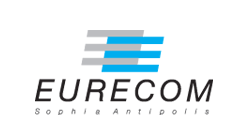In this paper, the weighted fractional Fourier transform (WFRFT) signal domain is introduced to enhance the security performance of two-way trusted relay systems at the signal level. The proposed scheme, which requires only a single relay node, leverages the multi-component energy distribution characteristics of WFRFT signals to improve security with low complexity and high power efficiency. The inherent security mechanism of WFRFT analyzed in this paper can be simply summarized as follows: the superposition of components in WFRFT signals that do not satisfy specific constraints will result in the inability to perfectly reconstruct the message signal. Based on this, confidential information is encoded into WFRFT signals with private transform orders, allowing legitimate users to achieve perfect decoding. Since WFRFT signals exhibit energy concentration only in specific transformation domains, mismatched transform orders adopted by the eavesdropper cause energy loss in the information-bearing signal, leading to intercomponent interference that further degrades the quality of the recovered signal. The advantages of the proposed scheme in limiting information leakage and improving the achievable secrecy sum rate (SSR) are analyzed. Numerical results validate the theoretical analysis and demonstrate the secrecy performance of the proposed scheme.
WFRFT-based signal domain secure communication for two-way relay systems
WCNC 2025, IEEE Wireless Communications and Networking Conference, 24-27 March 2025, Milan, Italy
Type:
Conference
City:
Milan
Date:
2025-03-24
Department:
Communication systems
Eurecom Ref:
8135
Copyright:
© 2025 IEEE. Personal use of this material is permitted. However, permission to reprint/republish this material for advertising or promotional purposes or for creating new collective works for resale or redistribution to servers or lists, or to reuse any copyrighted component of this work in other works must be obtained from the IEEE.
See also:
PERMALINK : https://www.eurecom.fr/publication/8135



